The Preliminary Apparatus
& Colwell Diagrams
for John 8:1-11
By Nazaroo
Group Data for John 8:1-11:
Von Soden's Groups
Criticisms have been raised against von Soden's larger body of work, such as his tendency to only examine a few representative samples of his text-types, or his general theories of the history of transmission. But these complaints simply don't apply to his unparalleled efforts in regard to the Pericope de Adultera.
In this case he completely collated virtually all available manuscripts himself, over 900 in his time. No one else has even attempted the task since, and every serious effort at reconstruction of the history and text of these verses must begin with Von Soden.
Of almost equal importance are von Soden's penetrating insights into the causes of many peculiarities in the copying stream for this pericope. So we must with due caution build upon his labours as we continue to apply new techniques and new knowledge developed since his time.
No doubt the apparatus remains incomplete, and contains some minor errors and ambiguities. However, it is important to realise that the basic text, groups and variants will not substantially change even when errors in collation are corrected and new manuscripts are added. The apparatuses we have, suitably combined, will represent the substantial situation with the text. It may be that some countings of manuscripts for various groups may also change, e.g., instead of 280 mss for M5 there may now be 300 or more. But these 'clean up' tasks should not affect the main picture a whole lot.
Preliminary Apparatus for John 7:53-8:11
Creating the Apparatus
We used Hodges & Farstad's apparatus as a base, because it lays out the collations of von Soden's original work very plainly. Again this was double-checked with von Soden's own apparatus, and expanded using Nestle/Aland/UBS and other critical editions such as Merck.
Finally, some corrections and notes re: actual manuscripts and families were added to give some insight into the variants on the initial examination.
Supplimentary Lectionary data was also occasionally noted where it seemed relevant. Significant singular readings were incorporated, not because they normally would be considered as candidates for the original text, but because they also gave insight into the history of transmission and the quality of the various witnesses.
Colwell Diagrams
All this was incorporated into the Colwell Diagrams: these are simply maps of divergence and convergence for the various manuscripts, families and groups.
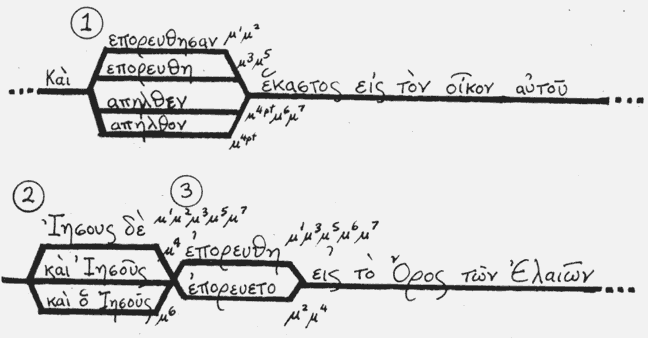
Colwell Diagrams record the flow and blending of various textual streams, as well as their special features. A look below at some of our Colwell Diagrams should be almost self-explanatory. The largest Group, M5, was used as the mainline or base, to which all the other variants from Groups and MSS were attached.
Variation Units
Introduction to Variation Units
The division of the variants into units is not wholly arbitrary, or without merit. In the first place, variants naturally fall into both classes and groupings in their own right, which can tell us alot about the history of the seven basic manuscript groups that have already been identified.
By classes, we mean that the variation 'units' can often be classified by the type of variant they represent. For instance they could be an update in language, or a deletion of an awkward phrase, an accidental omission, or an explanatory gloss. And the groupings of these units can tell us about the purpose behind the introduction of a new 'text-type', or how a mixed text came to take its current form.
Unit by Unit
Variation Unit 1
Variation Unit 1 is unique: it is simply the question of where in the Gospels the passage is found. Since we are only dealing with manuscripts which actually contain the passage, there are two main variants: (A) in its traditional place in John, and (B) its placement in Luke by the Group M4 (the Farrar Group, Family 13).
There are some sub-variations of these two basic options:
(a) namely the placement of the passage at the END of John's Gospel in manuscripts which are missing the passage, but have been corrected by appending it to the end. In these cases, the obvious intent by the corrector was to have it replaced in John in the subsequent copying.
(b) We may also note some manuscripts in which the passage has been improperly replaced back in John, either slightly before or after its usual placement, dislocating a few other verses in the process.
Again we simply note that this is a variation of the Johannine placement, only with the added complication of some incompetance by the corrector or copyist. Such accidents unfortunately speak more about the knowledge and care of the scribe than about the proper placement of the passage.
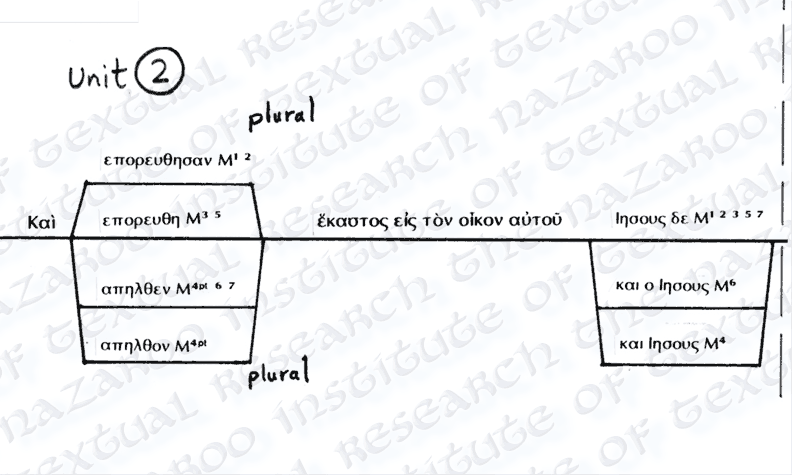
Variation Unit 2
paragraph
paragraph
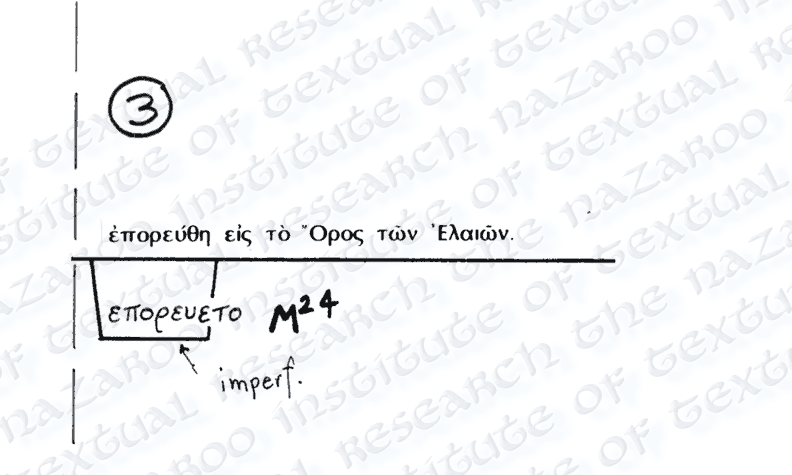
Variation Unit 3
paragraph
paragraph

Variation Unit 4
paragraph
paragraph
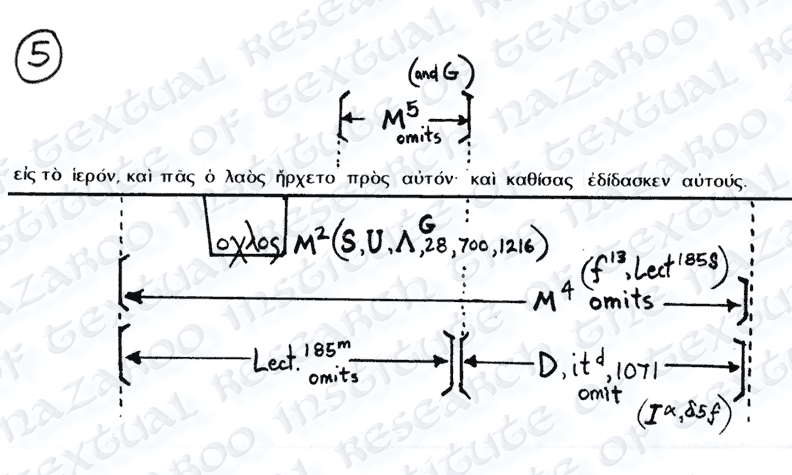
Variation Unit 5
paragraph
paragraph

Variation Unit 6
paragraph
paragraph
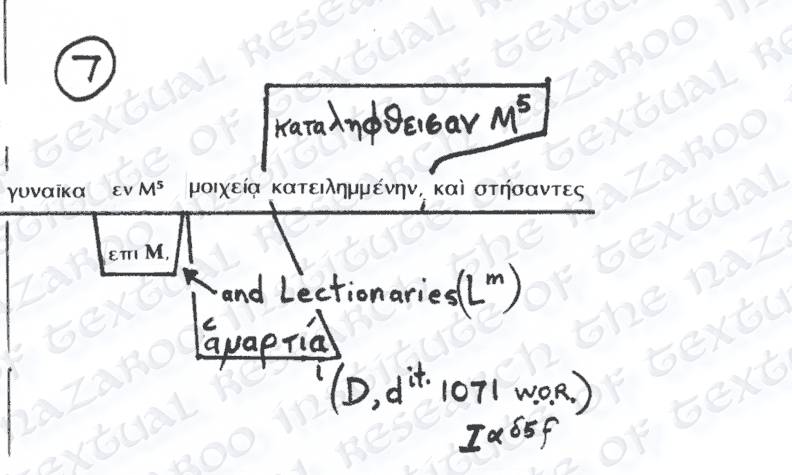
Variation Unit 7
paragraph
paragraph
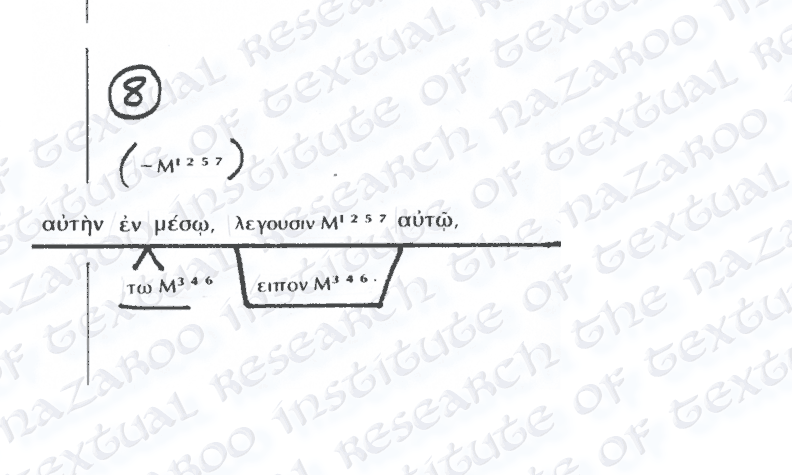
Variation Unit 8
paragraph
paragraph
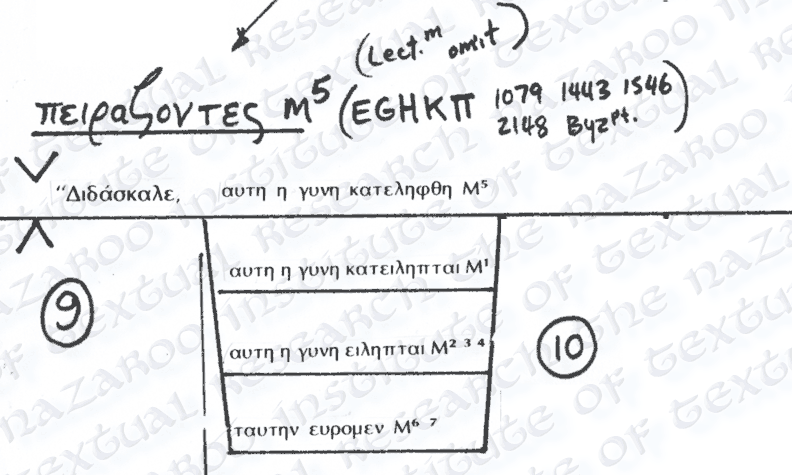
Variation Units 9 & 10
paragraph
paragraph
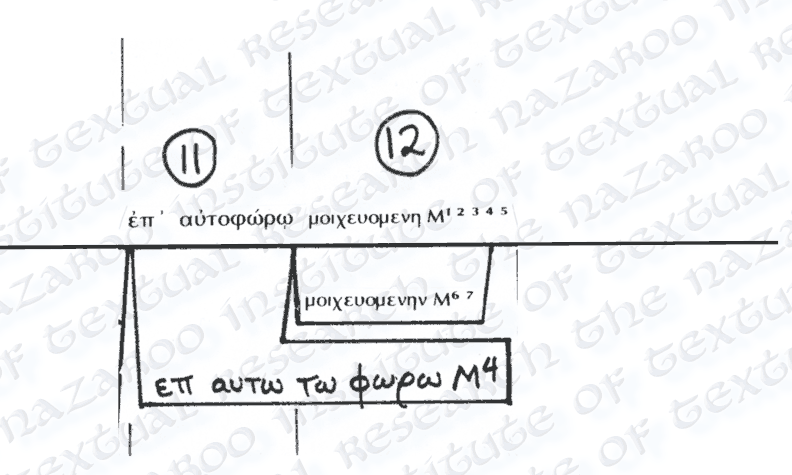
Variation Units 11 & 12
paragraph
paragraph
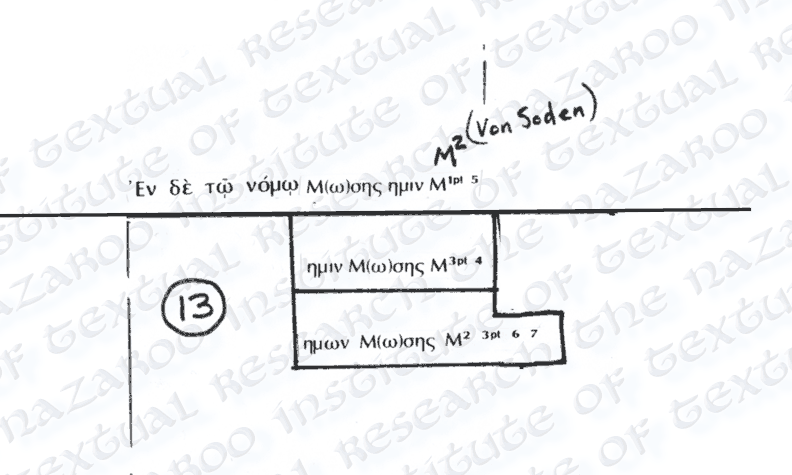
Variation Unit 13
paragraph
paragraph

Variation Units 14 & 15
paragraph
paragraph

Variation Units 16 & 17
paragraph
paragraph
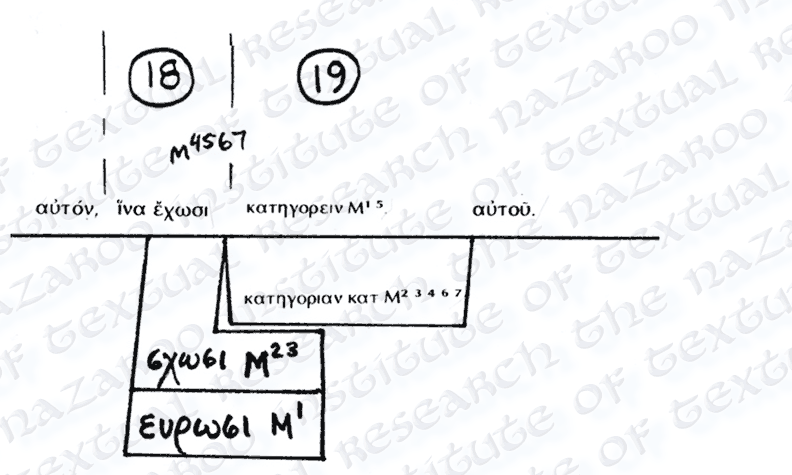
Variation Units 18 & 19
paragraph
paragraph

Variation Unit 20
paragraph
paragraph
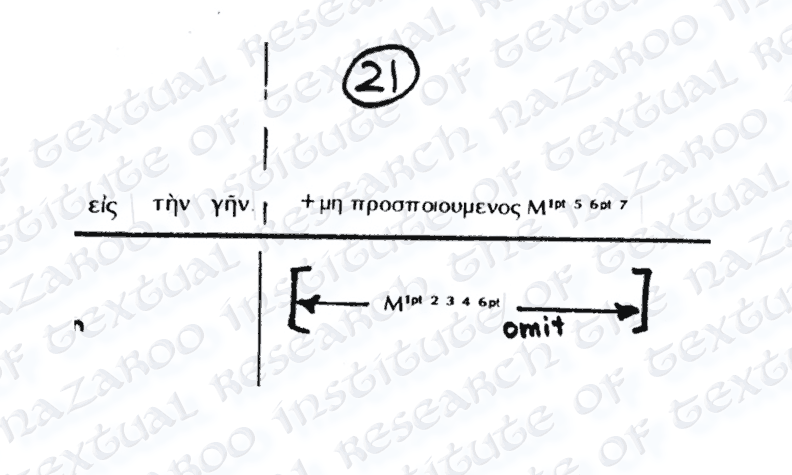
Variation Unit 21
paragraph
paragraph
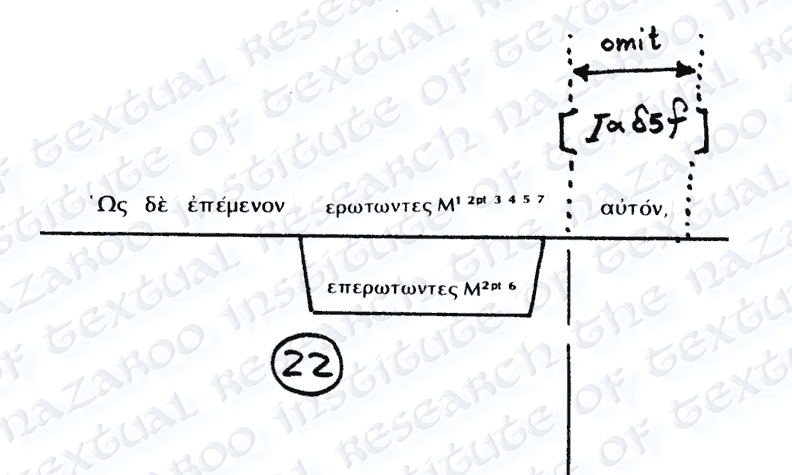
Variation Unit 22
paragraph
paragraph
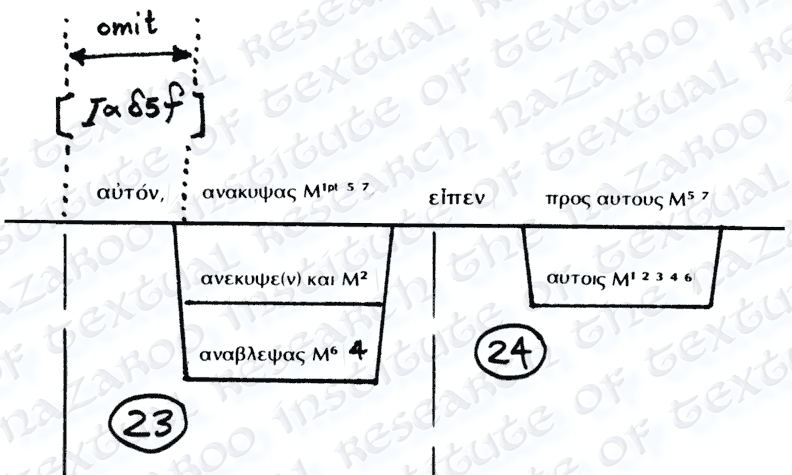
Variation Units 23 & 24
paragraph
paragraph
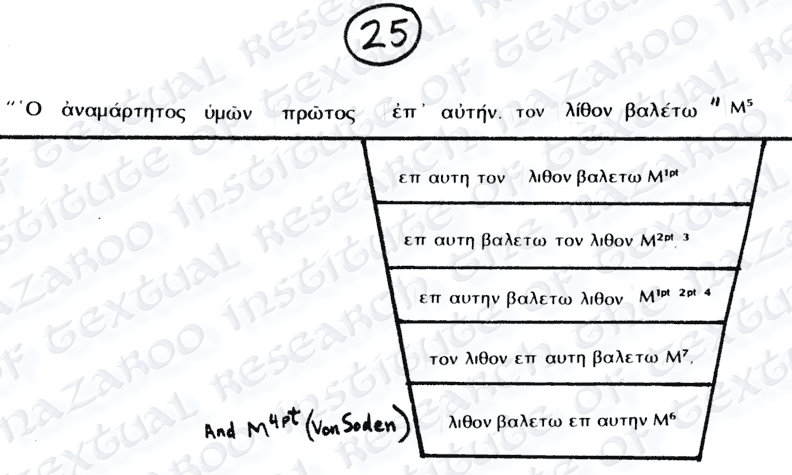
Variation Unit 25
paragraph
paragraph
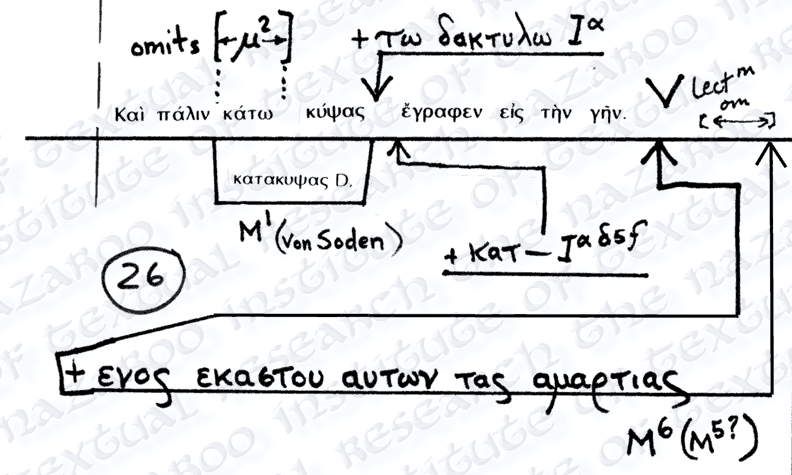
Variation Unit 26
paragraph
paragraph
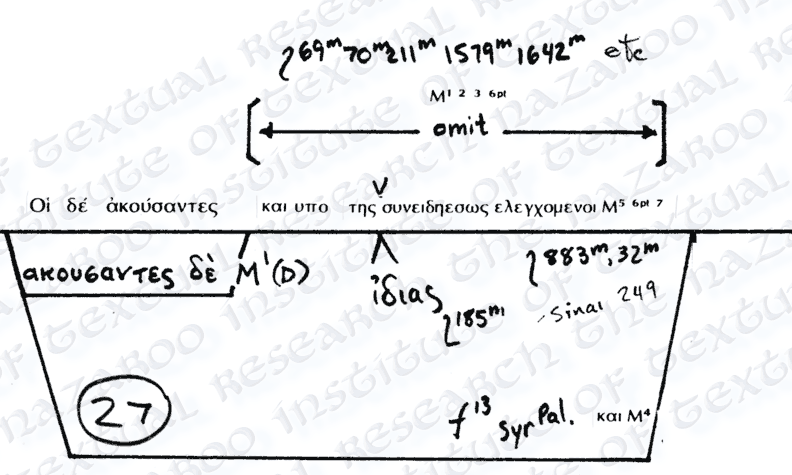
Variation Unit 27
paragraph
paragraph
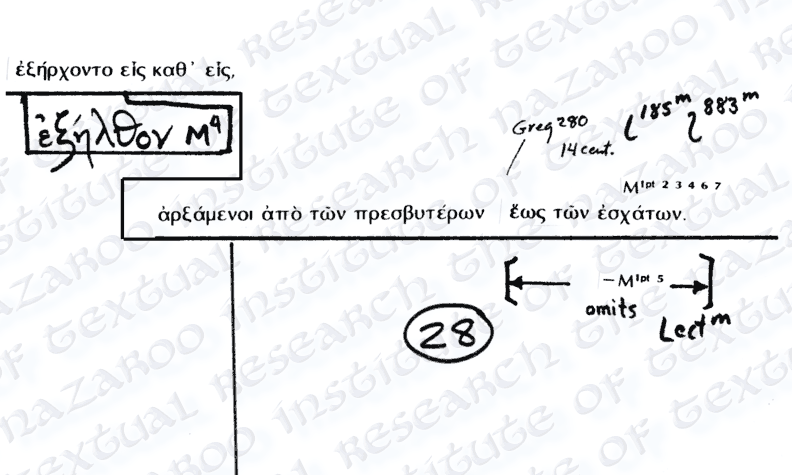
Variation Unit 28
paragraph
paragraph
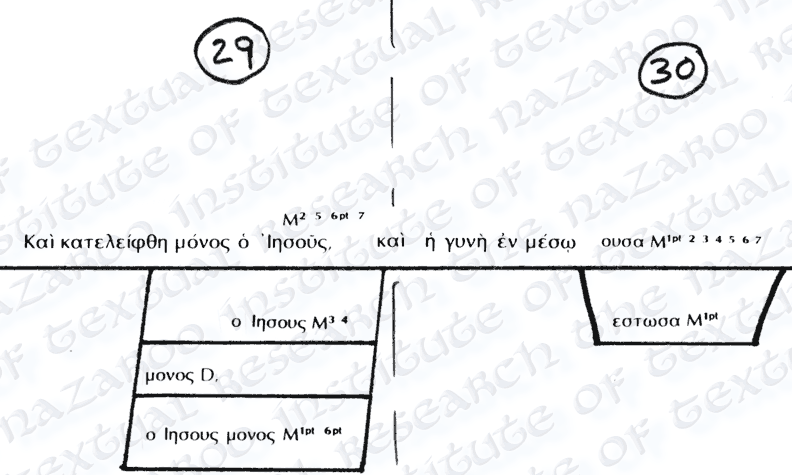
Variation Units 29 & 30
paragraph
paragraph
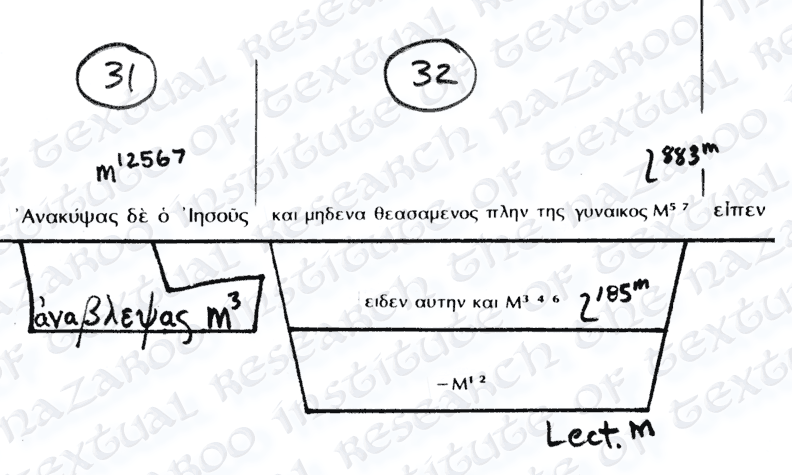
Variation Units 31 & 32
paragraph
paragraph
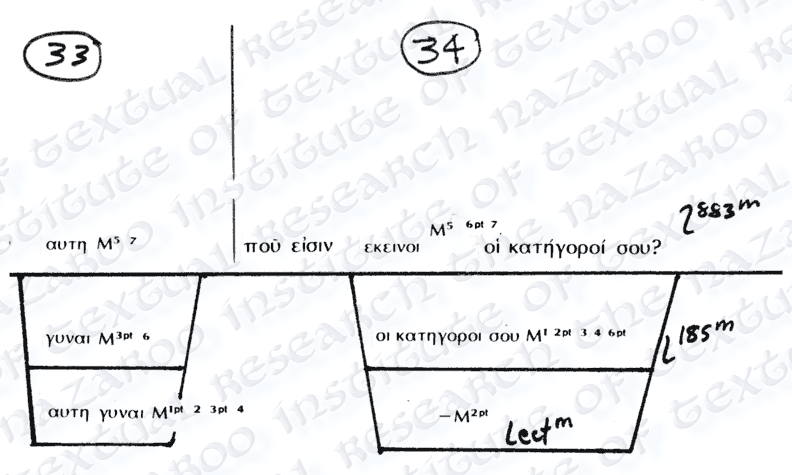
Variation Units 33 & 34
paragraph
paragraph
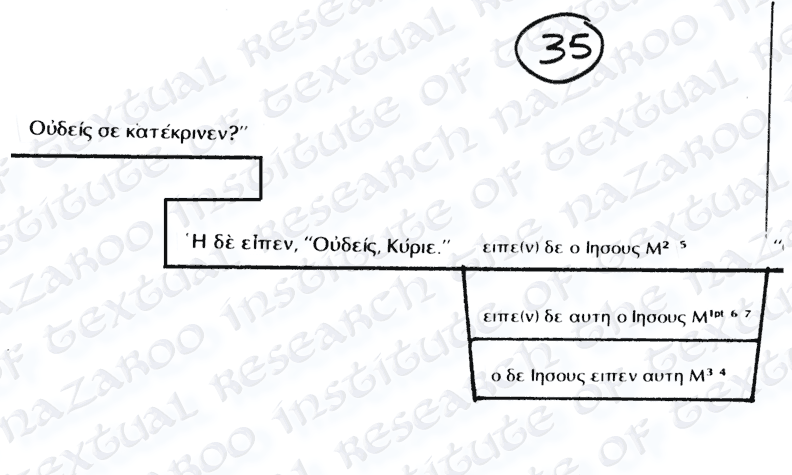
Variation Unit 35
paragraph
paragraph
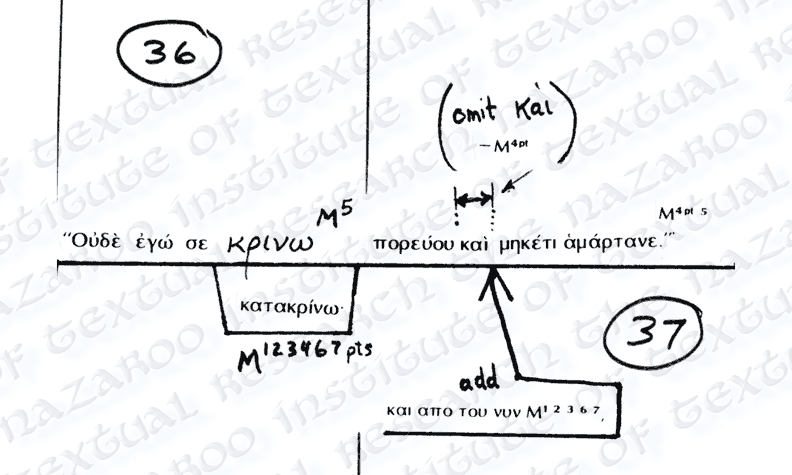
Variation Unit 36
paragraph
paragraph
Variation Unit X
paragraph
paragraph


























